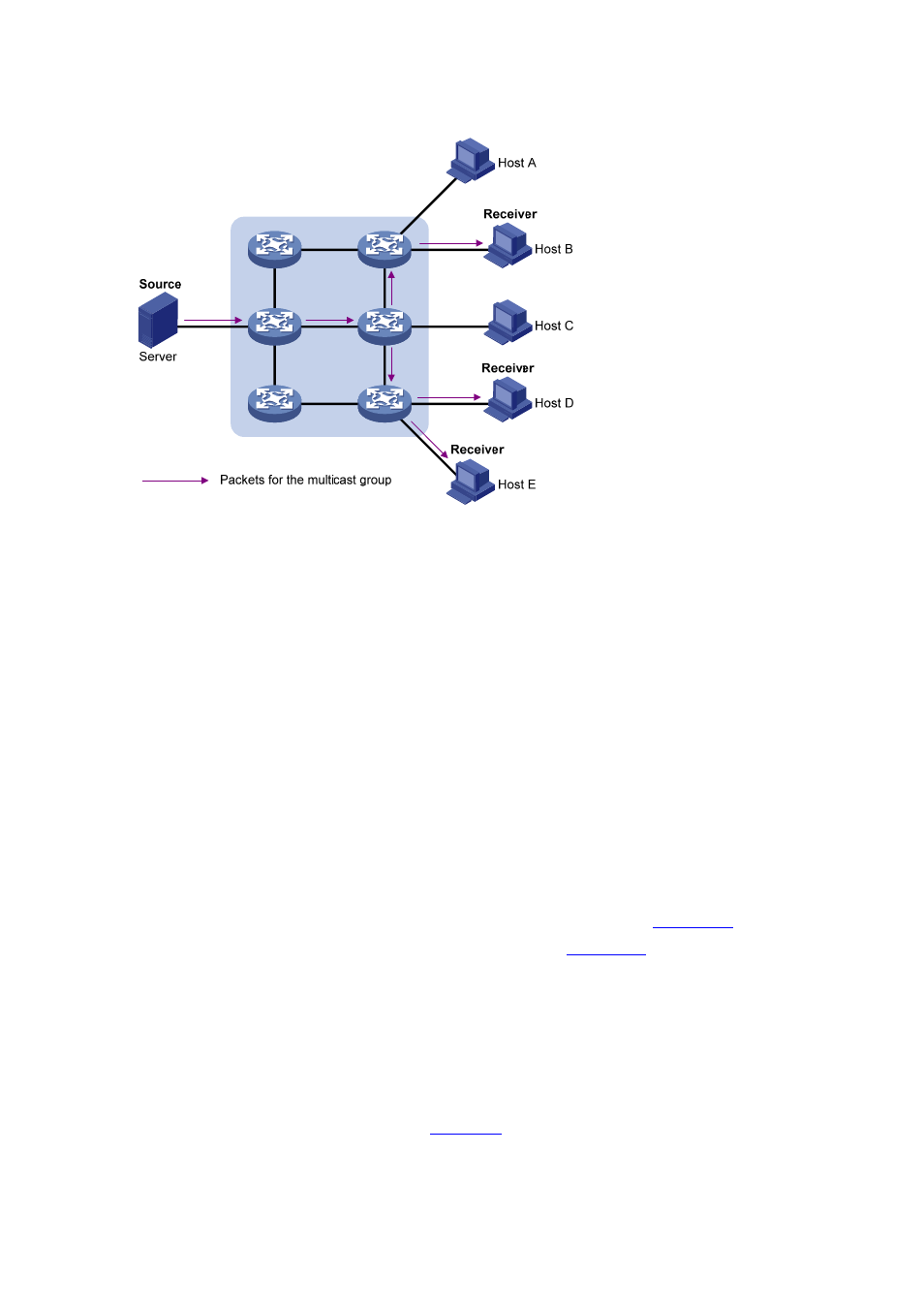Roles in multicast – H3C Technologies H3C WX6000 Series Access Controllers User Manual
Page 310

28-4
Figure 28-3
Multicast transmission
Assume that Hosts B, D and E need the information. To receive the information correctly, these hosts
need to join a receiver set, which is known as a multicast group. The routers on the network duplicate
and forward the information based on the distribution of the receivers in this set. Finally, the information
is correctly delivered to Hosts B, D, and E.
To sum up, multicast has the following advantages:
z
Over unicast: As multicast traffic flows to the node the farthest possible from the source before it is
replicated and distributed, an increase of the number of hosts will not remarkably add to the
network load.
z
Over broadcast: As multicast data is sent only to the receivers that need it, multicast uses the
network bandwidth reasonably and brings no waste of network resources, and enhances network
security.
Roles in Multicast
The following roles are involved in multicast transmission:
z
An information sender is referred to as a Multicast Source (“Source” in
z
Each receiver is a Multicast Group Member (“Receiver” in
).
z
All receivers interested in the same information form a Multicast Group. Multicast groups are not
subject to geographic restrictions.
z
A router that supports Layer 3 multicast is called multicast router or Layer 3 multicast device. In
addition to providing the multicast routing function, a multicast router can also manage multicast
group members.
For a better understanding of the multicast concept, you can assimilate multicast transmission to the
transmission of TV programs, as shown in